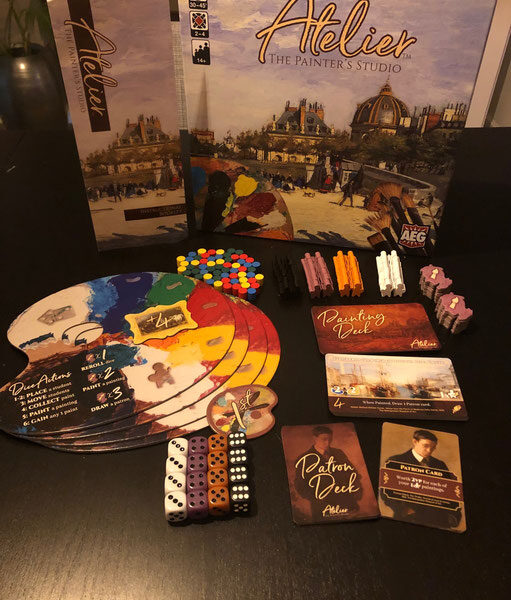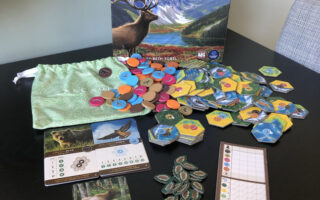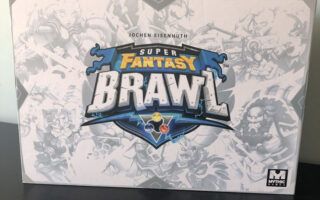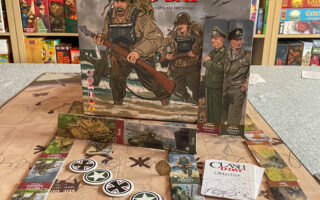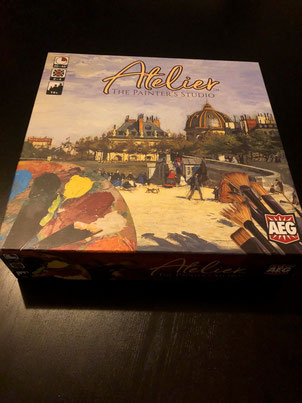
Game summary:
A game for 1-5 players (also solo play available)
Play time around 30 – 45 Min
Designer: (Uncredited)
Artist: Jules Bastien-Lepage, Rosa Bonheur, Jules Breton, Gustave Caillebotte + 27 more
Publisher: Alderac Entertainment Group (AEG)
Game setup: 5 minutes
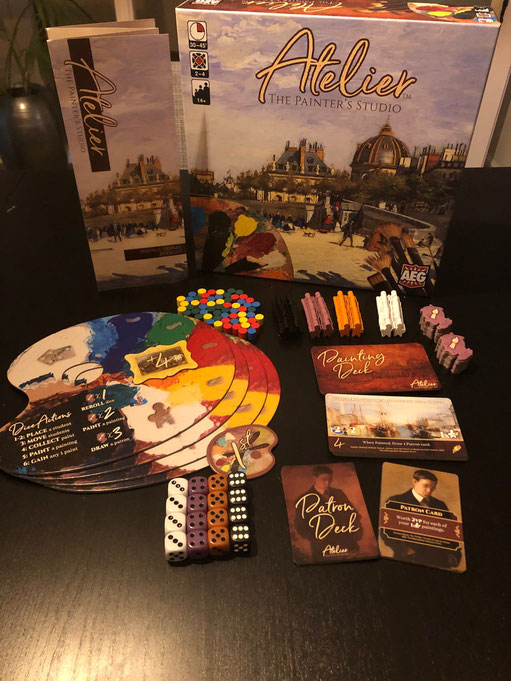
Unboxing
This box, got the following components in it:
1 Rulebook
1 First Master Token
1 Starting Player Token
4 Player Boards
16 Dice (4 of each color; Black, Orange, Purple and White)
16 Patron Cards
22 Game Tokens
40 Painting cards
48 Student Meeples (12 of each color; Black, Orange, Purple and White)
60 Paint Cylinders (15 of each color; Blue, Red, Green and Yellow)
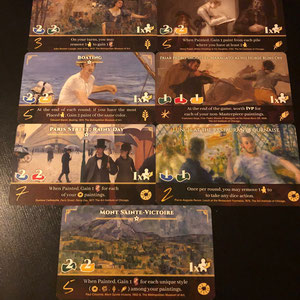
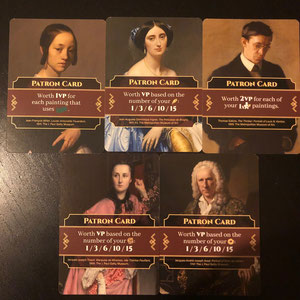
Let’s get it on the table
Atelier is played in rounds. During each round, players take turns using 1 or more of their dice to
accomplish tasks. Turns proceed clockwise around the table until all players have used all 4 of their dice. Once the round is over, all players recover their dice, pass the Starting Player token clockwise, and start the next round.
Set up the game board
In this their isn’t a game board. But you got your own player board and on the table you place 7 Painting cards. Before that you have to shuffle the deck and place 7 cards open and lay them on the table so everyone can see them. On these cards you can see Painting Powers, some of them can be used during your turns others you may use them at any point on your turn and some on the
same turn you paint them. Just read them carefully and don’t forget to use them!
Shuffle the Patron cards and form a deck of these cards. Make four piles of the cylinders for each color Blue, Red, Green and Yellow. Finally you place the Inspiration tokens and the First Master Token near the decks.
Set up the player board
Then give each player a player board (a painter’s palette), a set 12 Student Meeples in a color of their choice and 4 matching dice and they also receive 1 Inspiration token and 2 Patron Cards but every player may choose 1 to keep.
Place your dice on the top of your player board, your Patron card (faced down), your Students and the Inspiration token next to the player board.
Choose a player to start the first round.
After this is done, you’re ready to play!
Roll the four dice at the start of your turn, then you got 1 options. Option A or B;
A: Spend 1 or more dice to take a corresponding action. Then move that dice (1 or more) directly to your player board on the corresponding place. You can’t use them on this round;
B: Spend 1 die (doesn’t matter the value of the die) to take an Inspiration Token. Then move that dice (1 or more) directly to your player board on the corresponding place. You can’t use them on this round.
You may also choose to perform the following actions at any point:
C: Spend an Inspiration token to perform one of the Inspiration actions.;
D: Use powers on the paintings you own (including the one you’ve painted this turn).
When all of your dice have been spend on your turn, your turn ends directly and the turn goes to the next player.
If you are forced to end your turn, you cannot take
any actions, including spending Inspiration tokens
The actions that you can perform after rolling your dice:
1-2 Place student;
Place 1 of your students (meeple) from your Player board at 1 of the 4 colored (Paint cylinders) piles. If you don’t have any students left in your pool you can’t take this action.
3 Move students:
Move 0-1 students belonging to a player from a Paint pile to another Paint pile.
The chosen students do not have to come from the same Paint pile nor do they have to go to the same Paint pile. You must move at least 1 student, but you do not have to move a student for each player.
4 Collect paint:
Collect 1 paint (cylinder) from each pile where you have the most students.
In a 4-player game, you can also collect 1 paint from each pile where you are tied for the most students (you do not collect paint for ties in a 2 or 3-player game).
5 Paint a painting:
Select 1 of the 7 faceup paintings. You have to spend the required Paint cylinders as listed on the painting and returning them to the respective Paint piles and place the painting in front of you.
If the painting has student requirements, you must return that many students from the Paint piles to your Player board if you’re able if not remove as many students as possible from the Paint piles.
If the painting has a “When Painted” ability, perform it directly.
Replace the painting with a new card from the deck.
6 Gain 1 paint:
Gain 1 cylinder from any Paint pile even if you don’t have a student there.
Inspiration Actions
1 Reroll:
After rolling but before spending any dice, you can spend 1 Inspiration token to reroll ALL of your active dice. But, you can’t reroll a few of them
2 Paint a painting:
Spend 2 Inspiration tokens to take the Paint a Painting action as if you had spent a die.
3 Draw a patron:
Spend 3 Inspiration tokens to draw the top card of the Patron deck. You may look at it, but keep it
facedown until the end of the game.
End of the game
The final rounds starts when a player has painted their 3th painting with the Masterpiece Symbol. This player takes the First Master token (it’s worth 4 victory points!). Now the final round starts, after this round is completed all players will count their score.
You count the paintings, patrons and the First Master token. The player with the highest score wins.
When there’s a tie, the player with the most paintings wins if that’s also a tie, then the player with the First Master token wins. If none of these players has a First Master token, then you will share victory.
Final Conclusion & rating:
Weight: 1.67/ 5
My rating: 🎲🎲🎲🎲🎲🎲
We’ve enjoyed playing the game but it’s really a dice game where you have to be lucky that you throw the right numbers. I hear you thinking, yes that’s always at a dice game. Correct, but in this time you sometimes cannot take actions because you throw wrong and then you don’t have students to perform actions, or cannot move your students to another place for collecting other colors. It was like we missed something in it and now I know what it is, for not changing the game totally they can add a rule for using Inspiration tokens so that you can change your die with +1 or -1. We liked playing it, it’s not very hard to learn and the rules are clear and easy to pick up.
What I really like?
– The Rulebook, I really had an idea that I was visiting a museum, because it has the size of an information flyer at the museum.
– The painter’s palette, it really brings you into the them;
What could be better?
– The selected paintings, I would have found it more interesting when they’ve used recognizable paintings.
– The artwork of the box, it’s feels a bit boring. You play in the 19th century but it could be more colorful or sparkling;
– Add an extra rule for use of the Inspiration tokens so that you can change your die with +1 or -1.
I want to thank Alderac Entertainment Group (AEG) for letting me review this game
